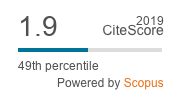Vector-borne diseases continue to be one of the most important determinants affecting human and animal health. Large numbers of people suffer from diseases like malaria, dengue, filariasis and leishmaniasis, especially in the tropics. Whereas these diseases were eradicated from the temperate climate zones, in recent years the rising incidence of 'emerging' vector-borne diseases such as bluetongue, West Nile Virus, Lyme disease, tick-borne encephalitis and the recent outbreaks of chikungunya and dengue in southern Europe provide evidence that these diseases are resilient and can disperse to other regions and continents where before they were not present or relevant.
Many tools for the management of vector-borne diseases are currently under pressure because of increasing drug and insecticide resistance, as well as the realization of biological variation of parasites and vectors and their ecosystems. At the same time, progress in our understanding of genetics, immunology, population biology and epidemiology allow for a better understanding of parasite-vector interactions. Here the state-of-the-art of these interactions is being reviewed, and means for using this information for advanced strategies of vector-borne disease control are proposed. 'Ecology of parasite-vector interactions' aims to provide a rapid overview of recent developments in the field of parasite-vector interactions and how this can be used for more effective and sustainable disease control.







